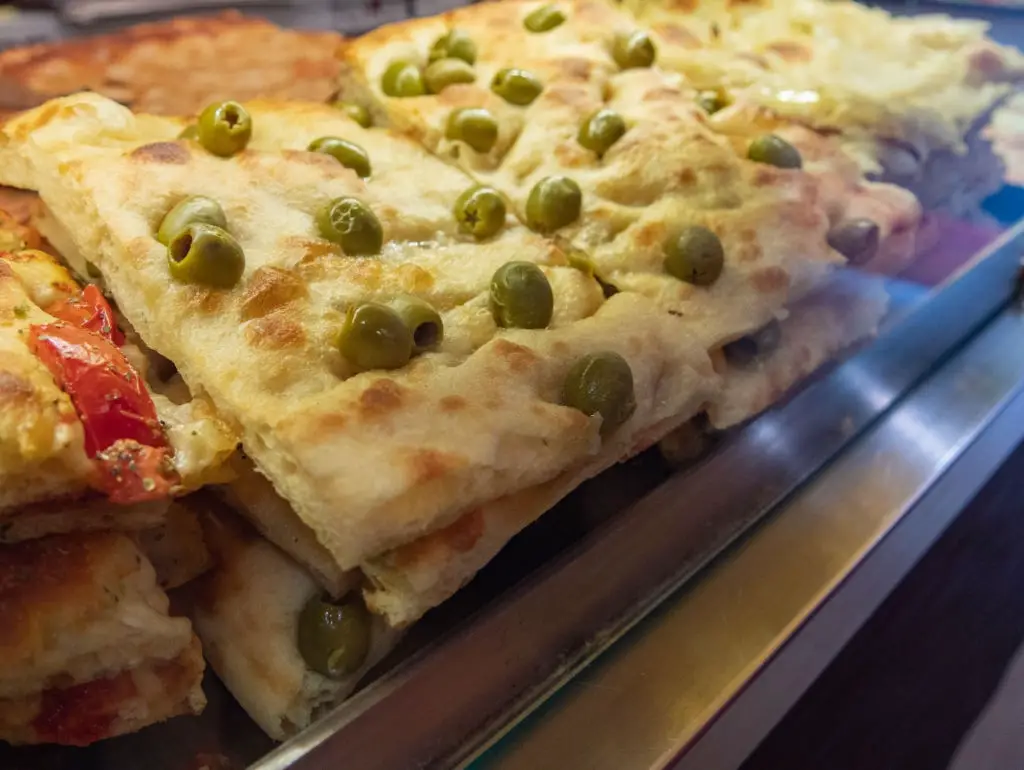It is important not to confuse Genovese focaccia with Ligurian focaccia. Each locality has its own tricks and its own personal recipe. They differ in the amount of brine, in thickness, in crunchiness, but they are never the same thing.
The history of Focaccia Genovese dates back to the times of the Phoenicians, when people used to mix flour, water and oil. What was missing was yeast, in order to make it crispy, but at the same time soft. This addition was made only afterwards, after the various vicissitudes suffered by this bakery product. It is said, in fact, that for a certain period, it was even forbidden by the Church.
The success was so great that many sciamadde were born in Genoa. They are fry shops with an oven, dedicated to the production of Fritto Misto di pesce, Farinata and Focaccia Genovese. This was the origin of the habit of the men of the port to eat focaccia at breakfast, a tradition that still remains today. There are many Ligurians who use focaccia as if it were a croissant, dipped in cappuccino.

With so few ingredients, it is fundamental that quality is high. In order to have a perfect dough it is necessary to respect to the gram the doses of brine and pay much attention to leavening as well. In Ligurian bakeries there are also variants with onion, olives, Pesto and even Focaccia di Recco with cheese.
Put the water, oil, salt and honey in a bowl. Add half the flour and knead
Add the yeast to the dough and knead for a few minutes
Add remaining flour and knead until dough is smooth. Let rest for 15 minutes.
Fold the dough over itself and let rise for 3 hours.
Roll out onto a baking sheet, crushing with your hands and let rise for 30 minutes.
Pour the emulsion of oil, water and salt on the dough.
Bake at 250 degrees for 15 minutes
You can customize the focaccia by adding previously cooked onions 5 minutes after baking.
Very good also stuffed with salami and cheese.